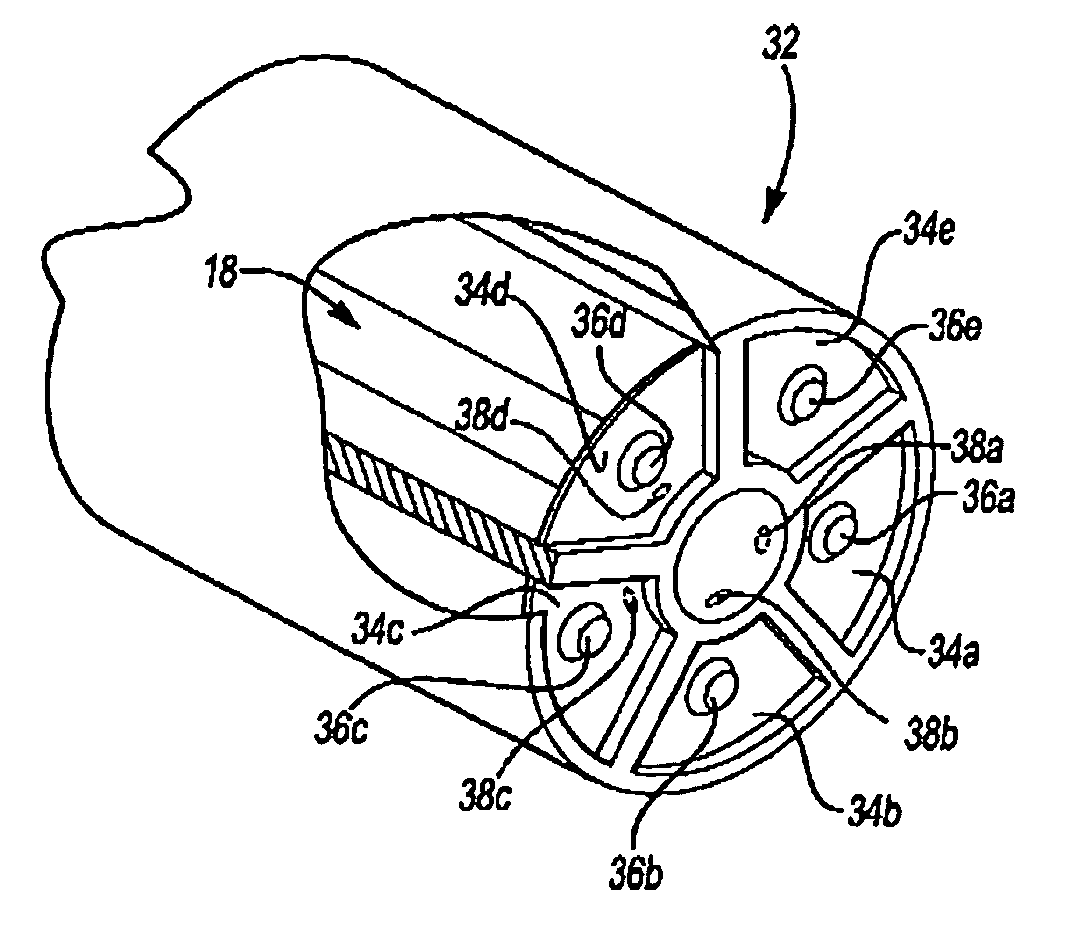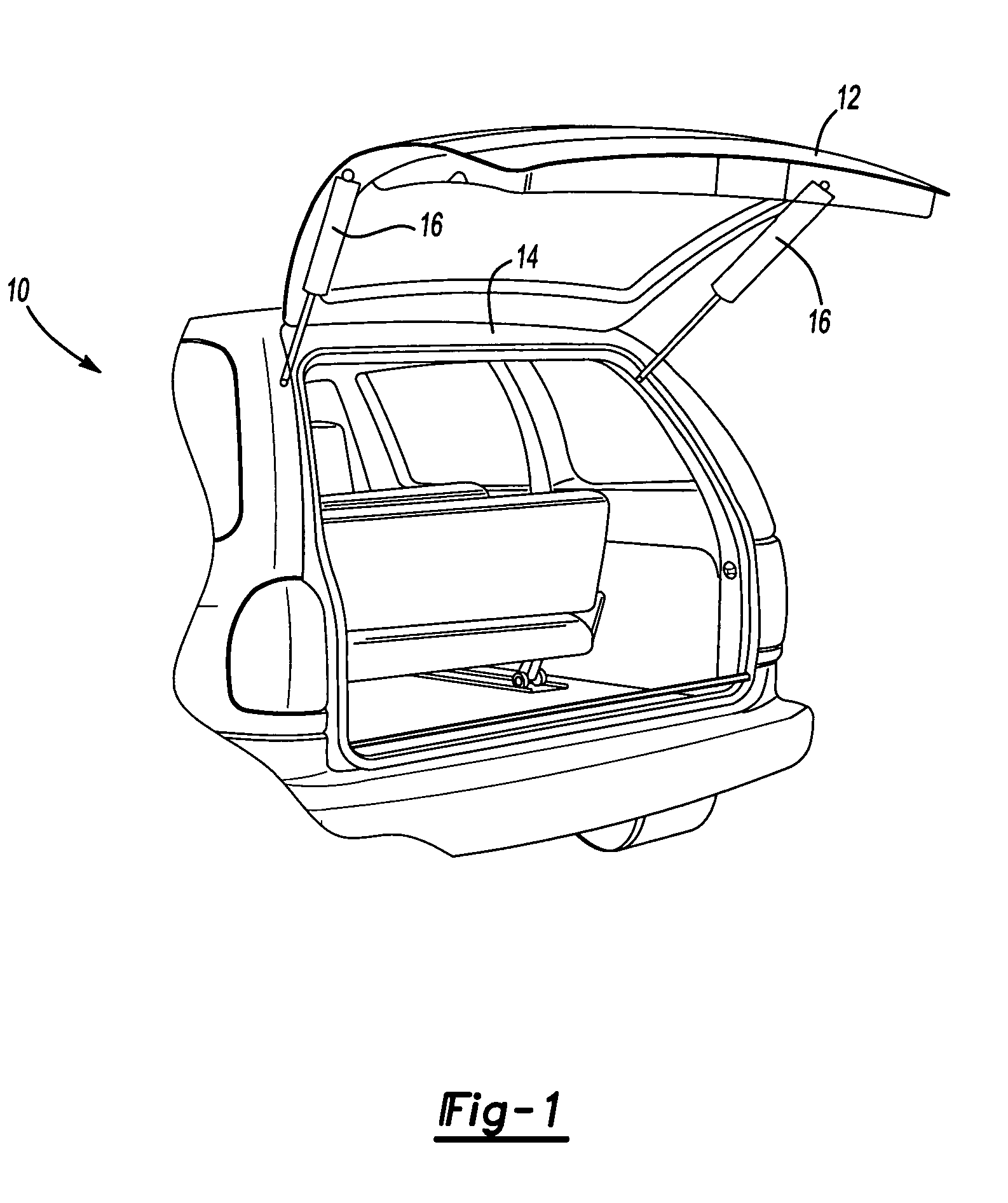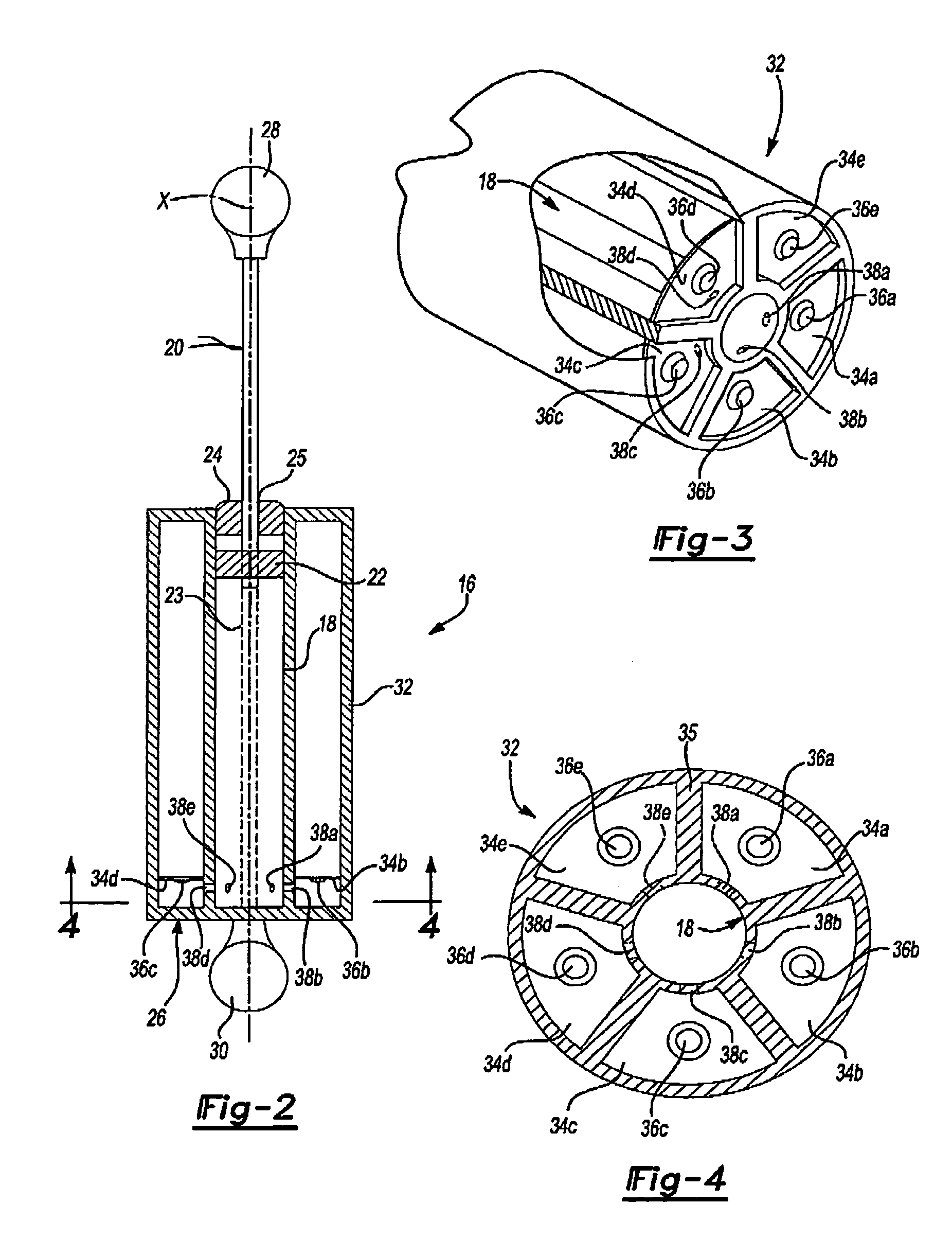Temperature compensating gas spring
a gas spring and temperature-compensating technology, applied in the field of gas springs, can solve the problems of unattainable numbers, and achieve the effect of increasing or decreasing the working volume, gradual and refined shift in the desired output for
- Summary
- Abstract
- Description
- Claims
- Application Information
AI Technical Summary
Benefits of technology
Problems solved by technology
Method used
Image
Examples
Embodiment Construction
[0015]FIG. 1 illustrates a general perspective view of a vehicle 10 having a closure member 12 which is hinged at an upper edge 14 and supported by a gas spring 16 on each side of the closure member 12 which operates as a counterbalance therefor. The gas spring may, of course, be used in many other applications.
[0016]Referring to FIG. 2, the gas spring 16 generally includes a piston cylinder 18 and a rod 20. A piston 22 is mounted to the rod 20 within a working volume 23 defined by the length of the piston cylinder 18 in which the piston 22 reciprocates.
[0017]The piston 22 reciprocates within the working volume 23 along axis X to separate the working volume 23 within the piston cylinder 18 into two volumes which are filled with gas (e.g., air, nitrogen or some other inert gas) under pressure as generally understood. The piston 22 is constructed to provide controlled by-pass flow of gas from one side of the piston to the other and, as generally understood, the piston provides a relat...
PUM
 Login to View More
Login to View More Abstract
Description
Claims
Application Information
 Login to View More
Login to View More - R&D
- Intellectual Property
- Life Sciences
- Materials
- Tech Scout
- Unparalleled Data Quality
- Higher Quality Content
- 60% Fewer Hallucinations
Browse by: Latest US Patents, China's latest patents, Technical Efficacy Thesaurus, Application Domain, Technology Topic, Popular Technical Reports.
© 2025 PatSnap. All rights reserved.Legal|Privacy policy|Modern Slavery Act Transparency Statement|Sitemap|About US| Contact US: help@patsnap.com



